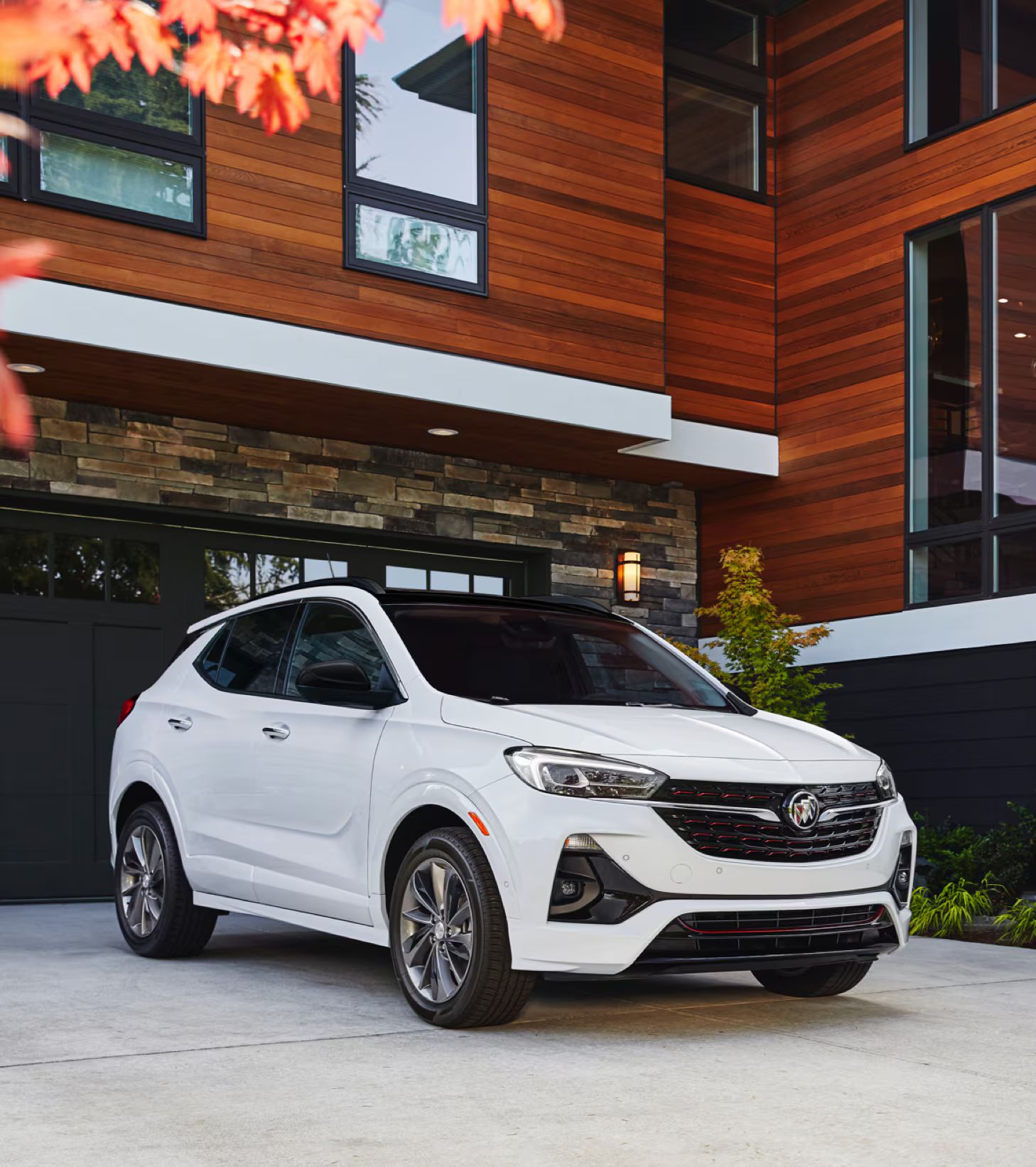
Road rage is an escalating epidemic on our roads, turning what should be a routine commute into a potential battleground. With aggressive driving incidents on the rise, it’s more critical than ever for motorists to equip themselves with actionable strategies to maintain safety and peace of mind. According to a Forbes report, a staggering 41% of drivers witnessed an act of road rage in the last 12 months, and 32% reported being on the receiving end of such incidents.
These aren’t just minor annoyances; road rage can lead to serious injury or even death. Over 1,000 fatalities have occurred in the last decade due to crashes involving road rage, and fatal accidents linked to aggressive driving have increased nearly tenfold since 2004, as reported by NHTSA. The statistics paint a grim picture, with 37% of aggressive driving incidents involving a firearm and millions of motorists carrying weapons.
While the situation is serious, you’re not powerless. The most dangerous road rage incidents often happen when two or more drivers react aggressively to each other. Understanding this dynamic is your first line of defense: you can choose not to escalate. By adopting a calm, defensive driving posture and knowing exactly what steps to take, you can navigate these challenging situations safely and effectively. This guide, inspired by Lifehacker’s practical approach, provides 14 essential strategies to help you deal with aggressive drivers, ensuring you can get home safe, no matter what others on the road might be doing.
We’ll start by laying the groundwork with seven foundational tips that focus on proactive driving habits and immediate, non-confrontational responses. These strategies are designed to help you prevent conflicts from even starting and de-escalate situations before they spiral out of control. Remember, your primary goal on the road is safety, not “winning” an argument or teaching another driver a lesson. Let’s dive into the practical advice that will empower you to reclaim your composure and control behind the wheel.
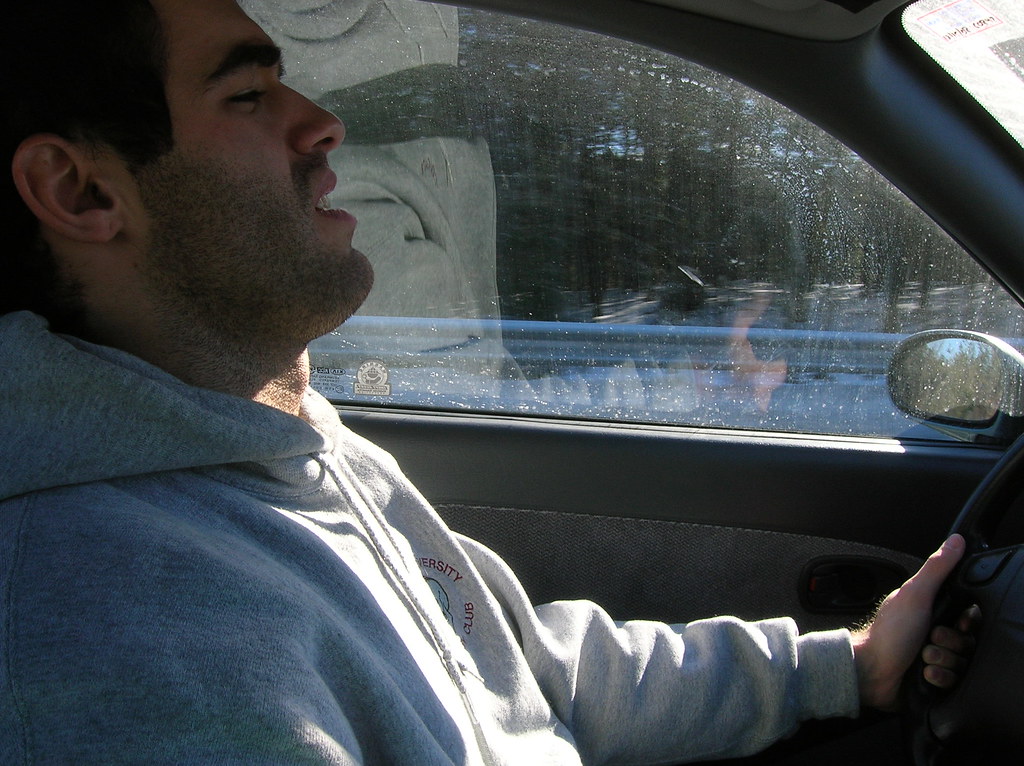
1. **Prioritize Courteous Driving Habits**The best offense is often a good defense, and on the road, that means practicing polite and predictable driving habits. Many aggressive driving incidents can be prevented by simply being a courteous motorist yourself. This includes avoiding behaviors that commonly irritate other drivers and contribute to a stressful environment, thereby denying them a chance to start a conflict by not responding to them.
To prioritize courtesy, actively avoid tailgating, cutting off other vehicles, speeding, weaving erratically, or leaving high beam headlights on unnecessarily. The context notes that an AA poll found 26% of people consider tailgating the most irritating driving behavior, alongside hogging the middle lane, swooping across several lanes to hit a motorway exit, overtaking on the inside, and driving too slowly. These are all behaviors that, if you engage in them, make you “liable to get ticketed.”
When merging, do so politely, and always err on the side of being courteous. This isn’t just about avoiding road rage; it makes driving a more pleasant experience for everyone. By ensuring you leave at least two vehicle lengths in front of you on the highway, you give yourself and others ample space, which can prevent perceived slights and help you to be “entirely acquitted of any potential traffic violations.” Being polite is often “the finest response you can give them.”
Driving assertively means you’re showing that you’re in control of the situation and you’re not about to be bullied. This isn’t about being aggressive back, but rather about being clear and predictable in your movements. Continue to use your turn signals, maintain a consistent speed, and avoid erratic movements. These actions communicate confidence and professionalism, which can often deter potential aggressors who are looking for a reactive target.
Ultimately, polite driving habits are a foundational element of road safety. They help to prevent common irritants that can spark anger in other drivers, and they ensure that you are not inadvertently contributing to the problem. By focusing on your own driving behavior and making it exemplary, you create a safer and more predictable environment for everyone on the road, significantly reducing the chances of attracting an aggressive response.
Read more about: 9 Vehicles Stuck with Negative Driver Stereotypes: Unpacking the Myths and Realities of Road Habits
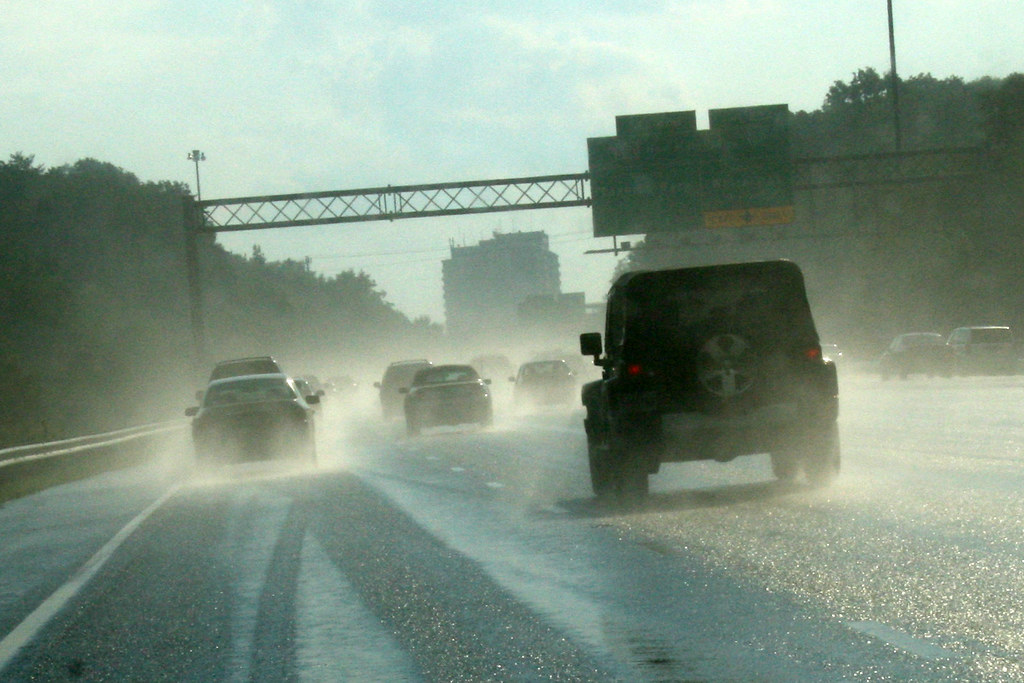
2. **Allow Aggressive Drivers to Pass**One of the simplest yet most effective strategies for de-escalating a situation with an aggressive driver is to simply get out of their way. Aggressive drivers are frequently rushing, and attempting to obstruct them or “teach them a lesson” only fuels their frustration and increases the risk of a dangerous confrontation. The context explicitly advises, “Simply let aggressive drivers go around you and typically, they will quickly be on their way.”
If you notice a driver exhibiting aggressive behavior, create distance between your vehicle and theirs. This might mean slowing down slightly to let them get ahead of you, or changing lanes to ensure you’re not driving right alongside them. The goal is to remove yourself from their immediate vicinity and avoid becoming their target. “Once they’ve gone, you can resume regular driving,” the context explains, highlighting the temporary nature of many such encounters.
It’s crucial to resist the urge to “win” or “prove a point” by holding your position on the road. While you might feel you have a right to your space, and you do, confronting an aggressive driver is not worth compromising your safety. The information points out, “Many people argue that they have a right to their space on the road – and they’re right. The problem is others don’t necessarily respect this right.” Your personal safety is paramount, and allowing someone to pass at a safe distance is a small price to pay for peace of mind.
Even after an aggressive driver has passed, you might find yourself feeling rattled. The context suggests that if “residual nervousness could make driving difficult long after the incident has ended,” consider pulling over for a minute to compose yourself before resuming your journey. This self-care step ensures that the aggressive driver’s actions don’t continue to impact your own driving judgment and safety, promoting a calmer return to the road.
In essence, ceding the right-of-way to an aggressive driver is a proactive safety measure. It’s not an admission of fault or a sign of weakness; rather, it’s a strategic decision to prioritize your safety and the safety of your passengers. Letting them pass allows them to continue their journey without further interaction with you, effectively defusing a potentially dangerous situation before it has a chance to escalate into something far worse. This calm, safe trick truly helps every time.
Read more about: Master the Merge: Pro Hacks for Seamless Lane Transitions Without Cutting Off Other Drivers

3. **Refrain from Provocative Gestures or Yelling**When faced with aggressive driving, our immediate impulse might be to react emotionally – to gesture, yell, or make eye contact to express our frustration. However, these actions are counterproductive and highly dangerous. The context strongly advises, “Don’t make rude gestures or yell at other drivers.” Remember, it is not your role to police the roads or teach other drivers a lesson, no matter how egregious their behavior might be.
Making eye contact with an aggressive driver, particularly one who seems to be “trying to pick a fight,” can be perceived as an invitation to escalate the conflict. Such direct engagement can further inflame their anger and solidify you as their target. The goal is to make yourself as uninteresting as possible to the aggressor. “You may persuade them to proceed if you ignore them and concentrate on the road,” the advice suggests, emphasizing the power of non-engagement.
Furthermore, keeping control of your voice and actions is crucial because “making the wrong move can unnecessarily escalate a situation, such as making eye contact or flipping the bird.” While it’s vital never to engage in confrontation, it’s also unwise to pretend that nothing is happening entirely without taking any other actions to protect yourself. The key is to be measured and non-provocative in your communication, if any, and to avoid any actions that could be misinterpreted as aggressive or challenging.
In scenarios where an aggressive driver doesn’t pass and stays close, actively avoiding eye contact is a key tactic. This creates a psychological barrier, signaling that you are not interested in confrontation. Your focus should remain squarely on the road ahead and your safe navigation, rather than on the actions or reactions of the aggressive driver beside or behind you. This allows you to maintain your composure and make rational decisions, rather than being drawn into an emotional battle.
By refraining from provocative gestures, yelling, or engaging in eye contact, you effectively starve the aggressive driver of the reaction they might be seeking. You prevent the situation from escalating into a personal confrontation and keep the focus on safe driving. This defensive posture is a powerful tool in de-escalation, allowing the aggressor to move on without finding a willing participant in their road rage.
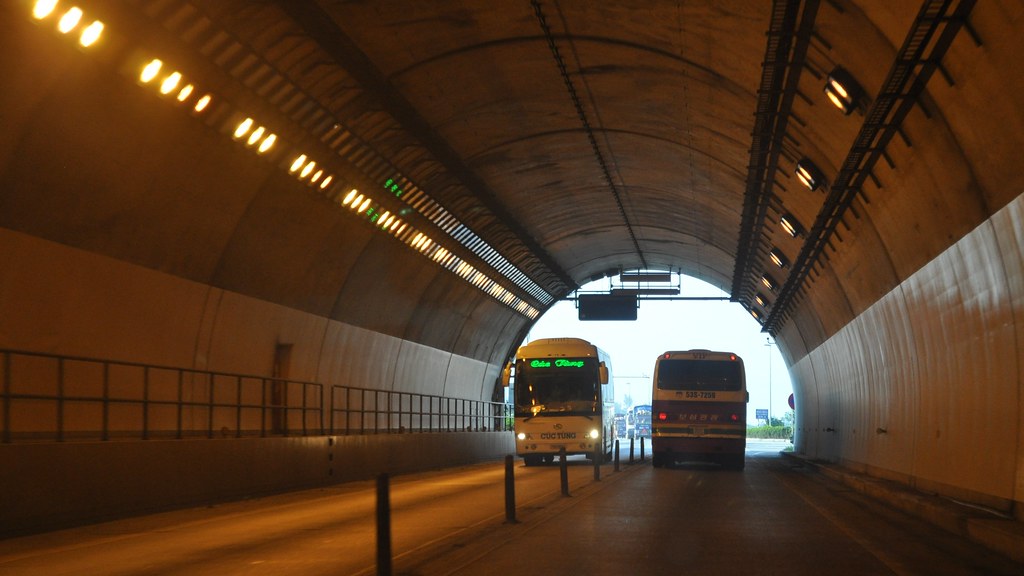
4. **Use Your Horn Judiciously**The car horn is an essential safety device, primarily designed for emergency situations to alert others to immediate danger. However, its misuse, particularly in expressing frustration or anger, can quickly turn a tense situation into a dangerous one with an aggressive driver. The advice is clear: “Horns should primarily be used in emergency situations.” Using your horn aggressively, or “honking without cause,” is listed as an aggressive driving behavior itself, and it can provoke an angry response.
While it might feel “appropriate and necessary to beep your horn at a driver who has abruptly cut you off,” doing so “will only escalate the situation.” The purpose of your horn should be to warn, not to scold. If you need to get another driver’s attention, a light, brief tap of the horn is sufficient and far less likely to be interpreted as an aggressive challenge. Giving drivers ahead of you at a light a few extra seconds of grace before honking to remind them to move through the intersection is also a polite practice that prevents unnecessary escalation.
“It’s crucial to remember when to use your horn to prevent retaliation from the driver.” A short honk can warn other motorists that something is happening, such as a car drifting into their lane, but a prolonged, angry blast signals aggression and can invite a confrontational response. The difference lies in the intent and duration: a warning versus an expression of rage, which is a key component in avoiding “emotional regulation issues” linked to road rage.
Remember, the goal is to de-escalate, not to inflame. An aggressive blast of your horn can easily be interpreted as a personal insult or a challenge, inviting the other driver to respond in kind, or even with heightened aggression. The guidance stresses the potential for a simple honk to trigger a disproportionate reaction from an already volatile individual, underscoring the importance of restraint.
By using your horn sparingly and only for its intended purpose of alerting to danger, you avoid inadvertently provoking an already agitated driver. This thoughtful approach ensures that a valuable safety tool remains just that – a tool for safety – rather than becoming a trigger for road rage. Patience and restraint in using your horn are key components of maintaining a calm and safe driving environment.
Read more about: Tesla Ownership: Avoiding Costly Pitfalls That Could Drain Your Wallet and Your Patience
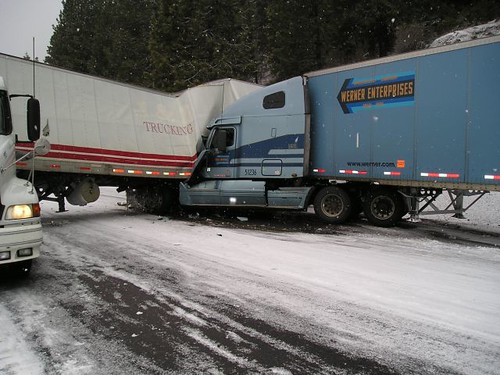
5. **Maintain Situational Awareness**Driving defensively isn’t just about reacting to immediate threats; it’s about proactively understanding and anticipating what’s happening around you at all times. This concept, often referred to as maintaining “situational awareness,” is crucial for dealing with aggressive drivers and preventing accidents before they occur. The context emphasizes, “Be conscious of your surroundings all the time.” This means eliminating distractions such as your phone, food, or other activities that take your attention away from the road.
Vigilance involves not only watching out for other drivers but also being prepared to take action if required. A key aspect of this is to “always consider the big picture and consider what mistakes other drivers might make.” This proactive mindset allows you to anticipate potentially risky maneuvers. The context explains, “If they’re going to make a risky maneuver, you can frequently tell by how they arrange themselves on the road.”
For example, if the car in front of you “is not moving along a straight line,” it could indicate a preoccupied or distracted driver, giving you an early warning. This observational skill helps you in “staying safe while driving and preventing accidents” by allowing you to adjust your position or speed defensively.
Part of maintaining situational awareness also involves adjusting your driving attitude by giving other drivers the benefit of the doubt. Many mistakes on the road are “unintentional and not meant as a personal offense.” By adopting this perspective, you’re less likely to react with anger or frustration yourself, which can prevent you from becoming an aggressive driver. This mental shift helps you remain calm and rational, even when faced with irritating behaviors.
By consistently practicing situational awareness – staying vigilant, anticipating potential problems, and approaching other drivers with a degree of understanding – you create a protective buffer around yourself. This allows you to react calmly and safely to aggressive behaviors, rather than being caught off guard or drawn into conflict. It’s a foundational skill for any driver, especially when navigating roads populated by impatient and aggressive individuals.
Read more about: 15 Top Cars for Retirees in 2025: Unbiased Choices for Safety, Value, and Lasting Reliability
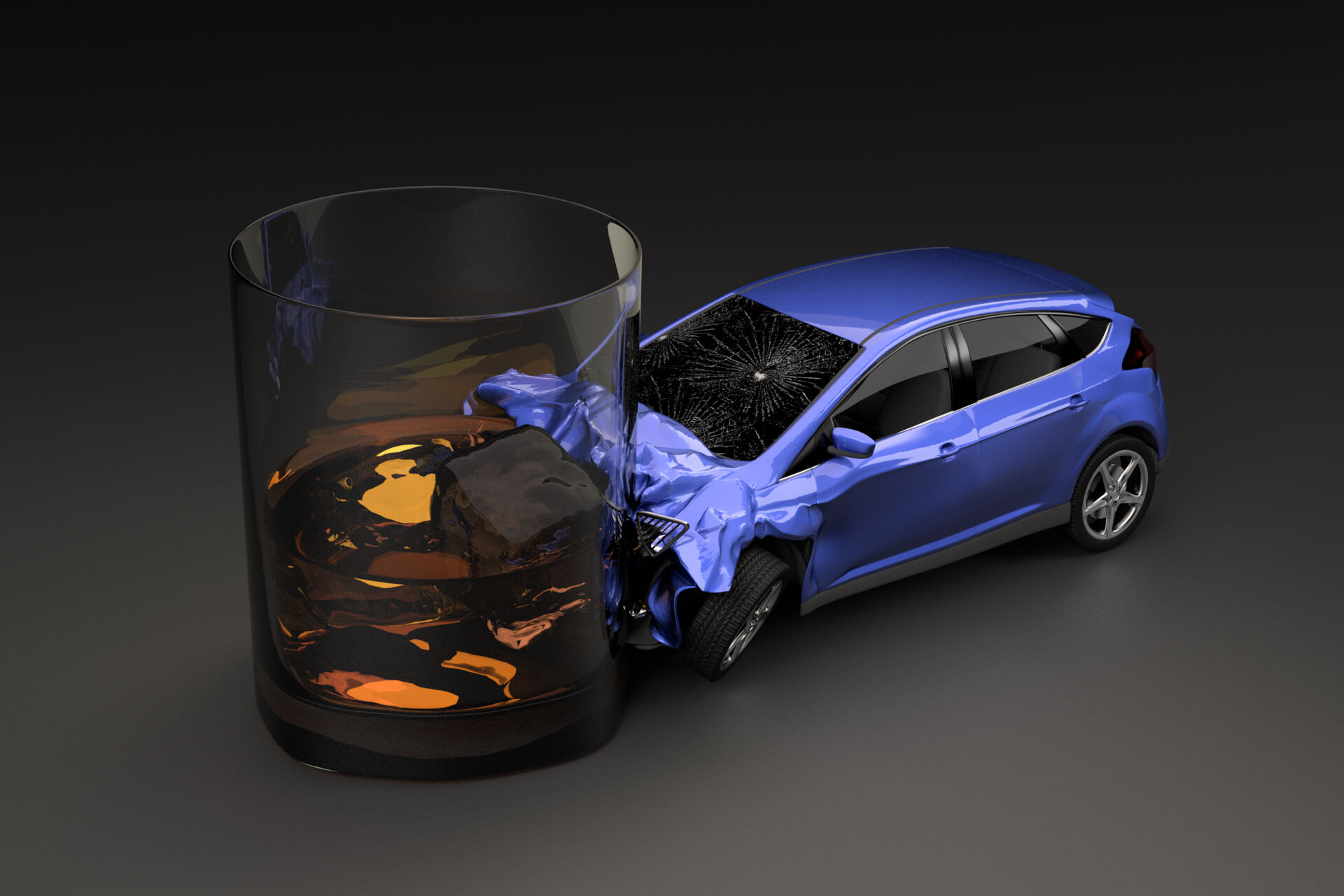
6. **Avoid Driving Under Duress**Our emotional and physical states significantly impact our driving ability and our propensity to react aggressively, or to become a target for it. One critical piece of advice for dealing with aggressive drivers, and preventing yourself from becoming one, is to “Avoid driving if you’re angry, upset, or drowsy.” These conditions compromise your judgment, dull your reaction time, and shorten your fuse, making you more vulnerable to engaging in or becoming a victim of road rage.
When you’re angry or upset, your cognitive functions are impaired. You’re more likely to misinterpret other drivers’ actions, view minor inconveniences as personal affronts, and react impulsively. The context implicitly warns against these “emotional regulation issues” often linked to road rage. Driving when emotionally compromised means you are less likely to “restrain your rage” and more prone to “aggressive actions and rude gestures,” even if another driver behaves dangerously or inappropriately.
Drowsiness, similarly, is a significant hazard. It mirrors the effects of alcohol impairment, leading to decreased alertness, slower reaction times, and difficulty maintaining focus. A tired driver is less capable of maintaining situational awareness and is more likely to make mistakes that could irritate other drivers or fail to react appropriately to an aggressive situation. Neither an angry nor a drowsy mind is conducive to safe driving.
If you find yourself in an emotionally heightened state or feeling excessively tired, it’s always safer to delay your journey, pull over to a safe rest stop, or find an alternative mode of transportation. Taking a few minutes to calm down or rest can make a significant difference in your safety and the safety of others on the road. This preventative measure addresses one of the fundamental “factors that lead to road rage and aggressive driving,” which includes “habitual or clinical behaviors” and general “disregard for others.”
By consciously choosing not to drive when under distress, you remove a major contributing factor to dangerous driving situations. You ensure that you are in the best possible mental and physical condition to make sound decisions, react appropriately to unforeseen circumstances, and avoid escalating any potential conflicts with aggressive drivers. This self-awareness is a powerful tool for maintaining control and safety on the road.
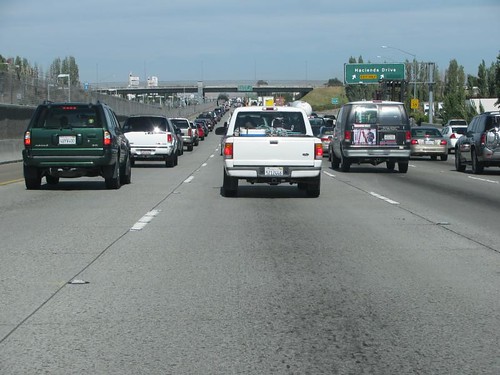
7. **Have Realistic Travel Expectations**A significant underlying factor contributing to driver frustration and aggressive behavior, both your own and others’, is often an unrealistic expectation of travel time. “Running late” and “traffic delays” are explicitly listed in the context as “factors that lead to road rage and aggressive driving.” By managing your expectations, you can drastically reduce your stress levels and your likelihood of engaging in or being affected by road rage.
The advice is simple yet profound: “Know when you’ll be driving in traffic, give yourself plenty of time, and don’t set unreasonable expectations for how fast you’ll get to your destination.” In today’s often congested world, traffic is an unavoidable reality in many areas. Expecting to consistently drive at or above the speed limit, especially during peak hours, is setting yourself up for frustration. When those expectations are unmet, it can easily lead to impatience and aggression.
Planning your route and allowing ample time for unforeseen delays – whether it’s an accident, construction, or simply heavy volume – is a proactive step toward maintaining a calm demeanor. If you’re not rushing, you’re less likely to tailgate, weave through traffic, or become enraged when another driver makes a mistake. This foresight fundamentally shifts your mindset from one of urgency and potential conflict to one of patience and control, fostering a sense of self-improvement.
An inability to let things go and a desire to escalate are always why enraged drivers spark road rage incidents. However, for irritating behaviors that initiate road rage, an AA poll found that 26% of people said tailgating was the most irritating driving behavior. Much of this tailgating stems from drivers feeling pressured for time. By giving yourself extra time, you eliminate the need to rush, which in turn reduces your temptation to tailgate or engage in other aggressive driving behaviors.
Ultimately, having realistic travel expectations is about accepting the realities of the road and prioritizing your peace of mind over perceived speed. It’s a preventative measure that helps you maintain a calm and composed attitude behind the wheel, making you less susceptible to the infectious anger of aggressive drivers and less likely to contribute to the problem yourself. This small adjustment in planning can yield significant benefits in terms of safety and stress reduction.
We’ve established the bedrock for defensive driving, focusing on preventing aggression and de-escalating minor encounters. But what happens when the situation escalates, when an aggressive driver becomes persistent, or when you find yourself in a truly high-stress scenario? This second section moves beyond prevention to arm you with advanced tactics – the final seven critical actions for protecting yourself, documenting incidents, and managing the aftermath when confronted by persistent aggressive drivers. These strategies are about maintaining control and ensuring your safety when others lose theirs.
Read more about: Devon Walker’s Candid Departure: Unpacking the ‘Toxic’ Dynamics and Looming Shake-Up at Saturday Night Live

8. **Prioritize Your Safety and Stay in Your Vehicle**When aggressive driving escalates to direct confrontation, your vehicle becomes your most vital shield. Prioritize self-preservation, not engagement. Never, under any circumstances, leave your car to meet an enraged individual. Doing so instantly puts you at severe risk of injury, or worse, and can compromise any legal defense, as “leaving the safety of your car doesn’t entitle you to use the self-defense argument because you weren’t forced to get out and have a fight.”
Should an aggressive driver pull up alongside you or attempt to block your path, immediately lock all doors and ensure windows are fully rolled up. Modern car windows are surprisingly resilient, making it “nearly impossible to break a modern car window without a weapon of some kind.” It’s imperative not to leave windows open “even a crack.” Actively avoid eye contact, as “angry drivers can be trying to frighten you or looking for a fight,” and direct engagement can escalate.
If stuck in traffic, maintain a safe buffer zone from the vehicle in front. The context advises, “If you must stop in traffic, avoid approaching the vehicle in front of you too closely. Instead, allow yourself enough space to distance yourself if required.” This space provides an escape route, allowing you to maneuver away if the aggressor becomes physically threatening. You are “perfectly entitled to do what’s necessary to escape a life-threatening situation.”
In a truly threatening situation where someone is outside their vehicle attempting access, activate your car alarm and repeatedly honk your horn. The goal is to draw as much attention as possible. “Attempt to draw as much attention to the situation as possible,” as witnesses and noise can deter an aggressor. Your car is your sanctuary; utilize its features to signal distress as a powerful defense against those who have “lost their mind.”
Read more about: Remember When These 8 Cars Ruled the Road? Now They’re Just Pure Cringe-Worthy.

9. **Document the Incident (Use a Dashcam or Phone)**In today’s world, evidence is paramount when dealing with unpredictable aggressive driving. Protecting yourself legally, and ensuring an accurate record, requires documentation. A dashcam is an invaluable tool, providing indisputable proof. The context emphasizes, “should the situation escalate and the authorities get involved, you’ll need to show that you were the victim otherwise, it’s your word against someone else’s.”
Investing in a forward and rear dashcam system, keeping it running automatically, is a proactive step. These devices quietly record your journey, capturing details without active participation during stress. Such footage can be “critical in claiming compensation” if injured or damaged, offering clear, objective proof. It provides peace of mind, knowing an impartial witness is always present.
If a dashcam isn’t an option, your smartphone can serve as a temporary alternative, but prioritize safety. While driving, only use your phone for emergencies. If safe to do so (e.g., pulled over), quickly snap photos or take a video. Focus on capturing the aggressive driver’s vehicle, license plate, and any characteristics. This “identifying information” is crucial for authorities to “catch up to them later.”
Recording the situation empowers you. It shifts from “your word against someone else’s” to one backed by objective evidence. This evidence supports police reports and legal claims, and serves as a factual account to help process the event. It’s a vital step in maintaining control and ensuring accountability.

10. **Do Not Go Home if Followed**One of the most terrifying road scenarios is realizing an aggressive driver is following you. This is a direct threat to your safety and potentially your family’s. The crucial directive: “Never go home if an aggressive driver begins to follow your vehicle.” Taking an aggressor to your residence puts loved ones at unwarranted risk, as “there’s no telling whether they’ll choose to come back later.”
First, confirm you’re being followed. Don’t panic, but stay alert. “Start by confirming that you’re being followed by taking a few turns and seeing what an aggressive driver does.” If they consistently mimic your turns, you have confirmation. Immediately recalibrate your route, diverting from your planned destination, especially if it leads home.
Your next destination should be a beacon of safety: the nearest police station. Driving directly there often “spook[s] the other driver enough to give up following you.” This act acts as a powerful deterrent. If a police station isn’t accessible, choose a “busy public location with witnesses” like a fire station, hospital, or crowded convenience store. Other people can significantly reduce the aggressor’s willingness to confront.
Even if the aggressor gives up the chase, it is still “wise to lodge a report with local law enforcement anyway.” Providing vehicle description, license plate, and incident details helps authorities track repeat offenders. This ensures that even if you escaped immediate danger, you’ve taken action to prevent future harm.
Read more about: Mastering the Road: A Driving Pro’s 7 Essential Tricks to Safely Stop Tailgaters Without Touching Your Brakes

11. **Report Aggressive Drivers to Authorities**While many road rage incidents de-escalate, sometimes aggressive behavior crosses a line. When actions become persistently harassing, dangerous, or threaten your safety, reporting to authorities is critical. “If the driver continues to harass you, if it is safe to do so, contact authorities to report the unsafe behavior.”
If reporting is necessary, be prepared to provide identifying information. This includes “an explanation of the offending car and its license plate number,” along with your “position and direction of travel.” Dashcam footage or phone recordings will be invaluable. Remember, call only when safe, preferably after extracting yourself from danger, or if it’s an emergency.
Understand the legal distinction: “Aggressive driving is a traffic violation, but escalated road rage is a criminal offense.” Reporting helps track dangerous individuals and prevent harm. You are not “policing the roads” but providing crucial information to professionals whose job is to “deal with drivers who are endangering others.” This empowers the community against road rage.
In emergencies, where you feel “like you’re in impending danger,” phone use rules change. You are “allowed to use your phone to make a call if it’s an emergency situation,” and it’s “the only time you won’t be ticketed.” While safer to pull over, your immediate safety from an enraged driver takes precedence. Staying on the phone with a dispatcher provides a lifeline to guide you.
Read more about: I Was Born and Raised in Italy: 13 Insider Secrets I Wish Tourists Knew

12. **Apologize if Appropriate and Safe**Even careful drivers can inadvertently make a mistake perceived as aggressive. In specific, low-stakes scenarios, a simple apology can be an incredibly effective de-escalation tool. “If you’ve accidentally cut off another driver, braked too fast, or made some other mistake that could be offensive, simply smile and wave as an apology.” This small gesture can profoundly “disarm and calm most drivers.”
The power of an apology lies in acknowledging a perceived wrong, diffusing tension. It communicates that any offense was unintentional. A brief, polite hand gesture, nod, or genuine smile signals recognition and regret. “Signaling an apology can often snuff out a confrontational situation and allow everyone to carry on,” demonstrating its practical effectiveness.
However, use this strategy judiciously, only when safe, and if you genuinely believe you contributed to the friction. It is not an invitation for further engagement with a highly aggressive individual, nor appropriate if the driver is clearly unhinged. Assess quickly: if your action was a minor error and the driver seems mildly irritated, a quick apology can prevent escalation.
This tip highlights understanding the difference between genuine mistakes and deliberate aggression. By taking responsibility, even for a small part, you empower yourself to resolve potential conflicts before they fully ignite. It’s a proactive step in maintaining a courteous road environment and minimizing a minor incident from becoming dangerous.
Read more about: Breach of Trust at 30,000 Feet: The Growing Alarms of Passenger Data Misuse in Air Travel

13. **Take a Break and Process the Incident**Even after an aggressive driving encounter, the psychological impact can linger, affecting your composure and future driving. “Residual nervousness could make driving difficult long after the incident has ended,” making it crucial to address these feelings. Your emotional state significantly impacts road safety; allowing stress to fester impairs judgment and increases susceptibility to future incidents.
If you’ve experienced a harrowing encounter, find a safe place to pull over. This might be a rest stop or well-lit parking lot. Take minutes to compose yourself. Practice deep breathing, re-center focus, and allow your heart rate to normalize. This pause ensures the aggressor’s actions don’t dictate your driving, allowing you to “resume regular driving” with a clear head.
Beyond the immediate aftermath, talking about the incident is therapeutic and helps gain perspective. “You should discuss the driving event with a friend or member of your family to help you reduce the stress of dealing with an angry driver.” Sharing your experience provides an outlet for stress, preventing buildup. A trusted confidante offers “a fresh viewpoint and better comprehend the circumstance,” helping process events without heightened emotions.
This processing and debriefing is vital for self-care and long-term safety. It ensures you’re not carrying past aggressive encounters into future drives, enabling you to “react coolly to any future roadside problems.” Actively managing stress and emotional fallout reinforces your ability to stay calm and rational, making you a more resilient and safer driver.
Read more about: Master the Merge: Pro Hacks for Seamless Lane Transitions Without Cutting Off Other Drivers

14. **Avoid Risky Maneuvers and Pull Over if Necessary**When faced with an aggressive driver, or reeling from a tense encounter, there’s a dangerous temptation to retaliate or escape fast. However, trying to “outdistance or imitate someone who is driving recklessly” is precisely what to avoid. This reaction “could result in an accident and just make the issue worse,” escalating a problematic interaction into a catastrophe. Your primary goal is to arrive safely, not engage in a chase.
Maintain your cool and continue driving carefully, focusing on predictable and safe habits. Resist excessive acceleration, weaving, or other risks endangering yourself or others. “Try to refrain from racing away because doing so can invite a chase or prompt the aggressive driver to retaliate by doing the same or by driving recklessly.” A calm, steady pace, adhering to traffic laws, is your safest bet.
If feeling overwhelmed, or if temptation to “take chances” is too strong, pull over. “If you feel tempted to take chances, pull over if it is safe to do so.” Allow the aggressive driver to move on and “wait until the other driver has left your line of sight” before resuming your journey. This physical separation provides a crucial reset, removing you from the conflict.
Consider, too, an alternative route. A slight detour can “avoid being overly irritated and incensed with them” and prevent re-encountering the aggressor. The core principle: prioritize your safety and emotional well-being over pride or confrontation. Remember, “getting home safely is more important than teaching another driver a lesson.” This mindset is the ultimate tool for navigating high-stress scenarios.
Read more about: Mastering the Road: A Driving Pro’s 7 Essential Tricks to Safely Stop Tailgaters Without Touching Your Brakes
As we navigate busy roadways, aggressive drivers feel almost inevitable. Yet, you are far from powerless. Arm yourself with these actionable strategies—from foundational courtesies to advanced de-escalation tactics—to transform into a confident, controlled, and safe driver. Every decision you make behind the wheel is a choice for your safety and the peace of mind of everyone around you. Drive smart, drive safe, and reclaim the calm of your commute. Your journey is yours to control, regardless of the rage that may swirl around you.


